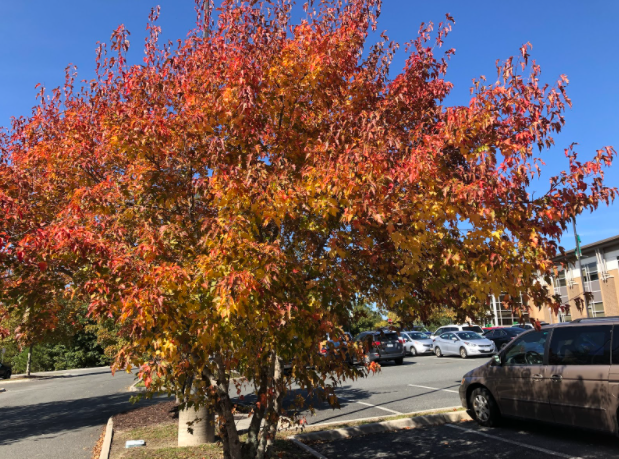Autumn Equinox across the world
With the passing of the Autumn Equinox, it is officially fall and the leaves at Clover Hill are beginning to change color.
The Autumn equinox, also known as the beginning of fall, is used to mark the end of summer as a means to keep track of important time-sensitive activities during the year. This year, it occurred on Thursday, Sept. 22.
Though it is defined as the day in autumn when the Sun and the Earth are aligned so that day and night are exactly equal in duration, people celebrate it as an event and a holiday. Also known as the fall harvest, this is a cheerful time for many because of the results of many months of hard work, seeding, weeding and reaping that will keep the locals fed throughout the winter before the process restarts. Different cultures celebrate this event in different ways, and the festivities date back centuries to ancient civilizations.
For ancient Greeks the equinox marked the return of the goddess Persephone to the darkness of the underworld where she would reunite with her husband Hades. Demeter, the goddess of agriculture and the harvest in Greek Mythology, is the mother of Persephone. The most important foods that the Greeks would grow in this time are wheat, barley, olives, grapevines, broad beans, chickpeas and lentils.
The Irish and Scottish Celts celebrated the day known as Mabone (pronounced May-bone) to salute the fall harvest. The Druids, high class ancient Celts, call this day Mea’n Fo’mhair and honor the Green Man, the God of the Forest, by offering libations to trees. These are ciders, wines, herbs and fertilizer.
In Japanese culture the Autumn Equinox is celebrated with the tradition of Higan. Higan is a Buddhist holiday exclusively celebrated by Japanese sects for seven days. Higan is a celebration of the spiritual move from the world of the living to the world of enlightenment. It is a time for remembering the dead and visiting, cleaning and decorating their graves along with reciting sutras and Buddhist prayers. They also offer foods like ohagi, which are rice balls covered with sweet bean paste, and sushi.
The ancient Romans celebrated the Autumn Equinox with the Feast of Cybele every year. Cybele was a mother goddess in Roman mythology and priests performed mysterious rites in her honor. They also grew crops such as wheat, barley, and spelt.
The Autumn Equinox is memorialized in many different cultures all over the world and throughout time in their own ways. Some are honorable to the dead, some honor their leader and some are religious holidays, but what they all have in common is the growth of important crops to last during the cold winter.

Camerin Thrweatt is a senior at the Hill. This is his third year in the building; however, he's lived here for 3 and a half years. Camerin, before attending...

Ben is a senior in his third year of writing for the Cavalier Chronicle and his second as an editor. His love for writing led him to join the staff, and...













Jane Bechtold • Nov 15, 2022 at 10:15 am
This article was so informational and I liked how it explained the ways different cultures celebrate the autumn equinox. The article was written so well, too!
KT Stock • Nov 15, 2022 at 10:11 am
Interesting how it ties in with ancient Greek! Really cool.
Anjelina Mays • Oct 27, 2022 at 2:01 pm
This was a really interesting topic, I had no clue other cultures celebrated The Autumn Equinox. Great article overall!